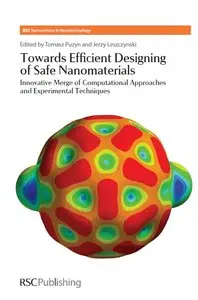Jerzy Leszczynski, Tomasz Puzyn - Towards Efficient Designing of Safe Nanomaterials: Innovative Merge of Computational Approaches and Experimental Techniques
Published: 2012-09-27 | ISBN: 1849734534 | PDF | 378 pages | 8 MB
The expanding field of nanotechnology is now one of the most promising areas of science. However, because some nanoparticles can have a negative impact on human health and the environment, the design of novel materials must always be accompanied by a comprehensive risk assessment. Until now, the information on the methods available has been fragmented and incomplete. This book is the first to provide a comprehensive review of recent progress and challenges in the risk assessment of nanomaterials by empirical and computational techniques. Topics covered include: benefits versus risks, carbon based nanomaterials, environmental detection and quantitative analysis, chemometric modelling, human exposure assessment, toxicity testing, nano-QSAR, risk assessment strategies, policy and regulatory frameworks.
Nanotechnology is one of the most promising and rapidly-expanding areas of science and the development of new materials on the nanoscale can benefit many disciplines, including chemistry, physics, and medicine. However, novel nanomaterials can possess a negative impact on human health and the environment and their development should be accompanied by a comprehensive risk assessment. Until now, information on the methods available for this purpose has been fragmented. This book presents a comprehensive review of the latest achievements in risk-assessing novel nanomaterials, drawing on expertise from across the globe. Both empirical methodologies and computational techniques are presented, and the editors advise that both groups of techniques are required for a complete risk assessment. Anyone developing new nanomaterials (in academia or industry) will find this book an essential reference. Toxicologists and environmental scientists will also benefit from learning the latest tools used for detecting nanomaterials in the environment.



